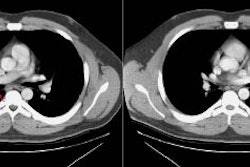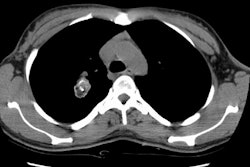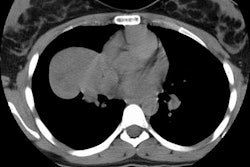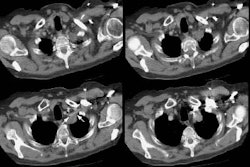Association of small cell lung cancer and the anti-Hu paraneoplastic syndrome: radiographic and CT findings.
Chartrand-Lefebvre C, Howarth N, Grenier P, Keime F, Orcel B, Beigelman C
OBJECTIVE: The anti-Hu syndrome (bearing the name of the patient in whom the antibody was first discovered) is characterized by a paraneoplastic encephalomyelitis or sensory neuronopathy and the presence of a specific antibody in the serum or CSF and is associated with lung cancer in most patients who have the syndrome. The objective of this study was to determine the relative merits of chest radiography and CT in the imaging of patients with the anti-Hu syndrome. MATERIALS AND METHODS: Chest radiographic and CT findings of 11 patients with anti-Hu syndrome were reviewed and correlated with results of bronchoscopy, surgery, or autopsy. RESULTS: Ten of the 11 patients had small cell lung cancer; in the remaining patient, no cancer was found. Small cell lung cancer was first revealed on radiographs in one patient and solely on CT in the remaining nine patients with small cell lung cancer. In six of these nine patients, the initial CT findings were positive for lung cancer. Tumor was found on follow-up CT in 4-8 months when initial CT findings were negative. Mediastinal adenopathy was present in all 10 cancer patients. Hilar adenopathy was present in four. Parenchymal involvement was seen in three of the 10 patients with cancer. In two patients, the only CT finding of small cell lung cancer was one mediastinal lymph node of 10 mm in each patient. CONCLUSION: Chest CT should be recommended for patients with anti-Hu syndrome, even when chest radiographic findings are interpreted as normal.



